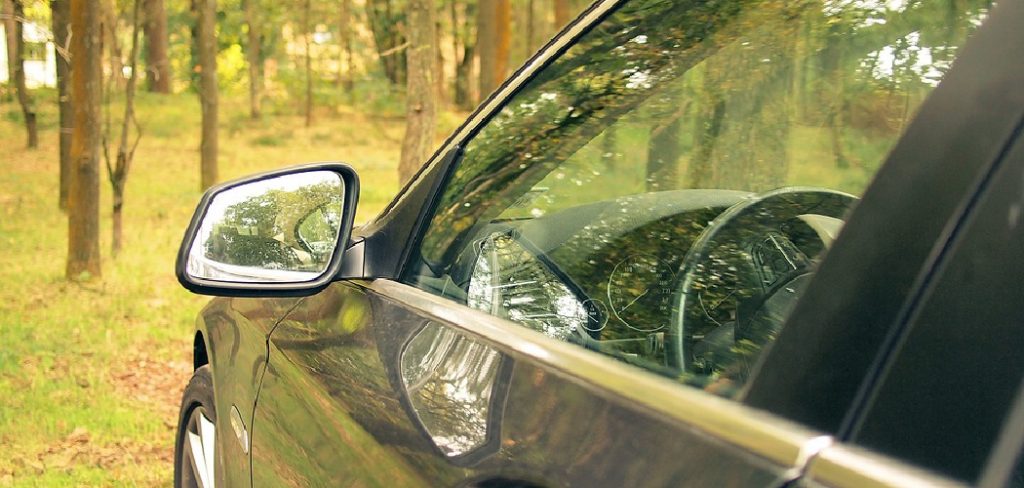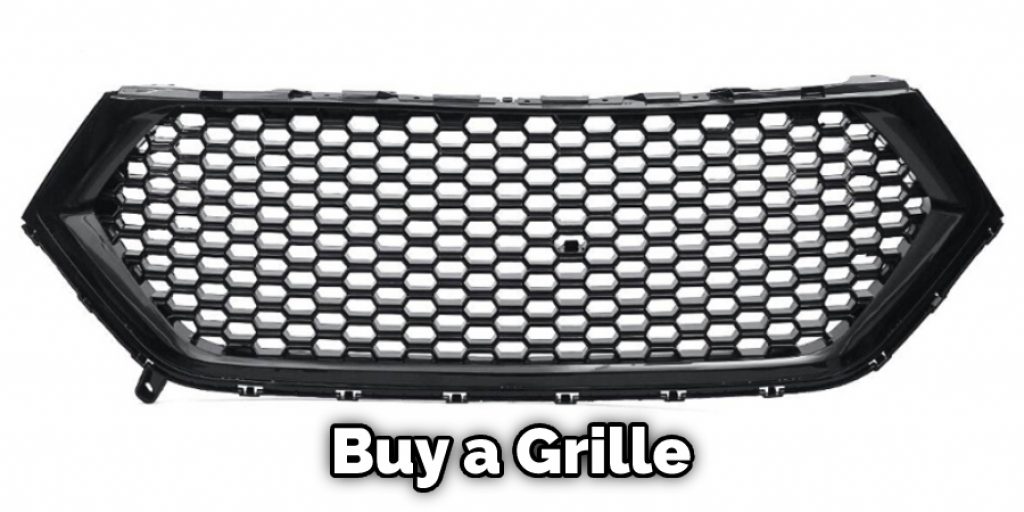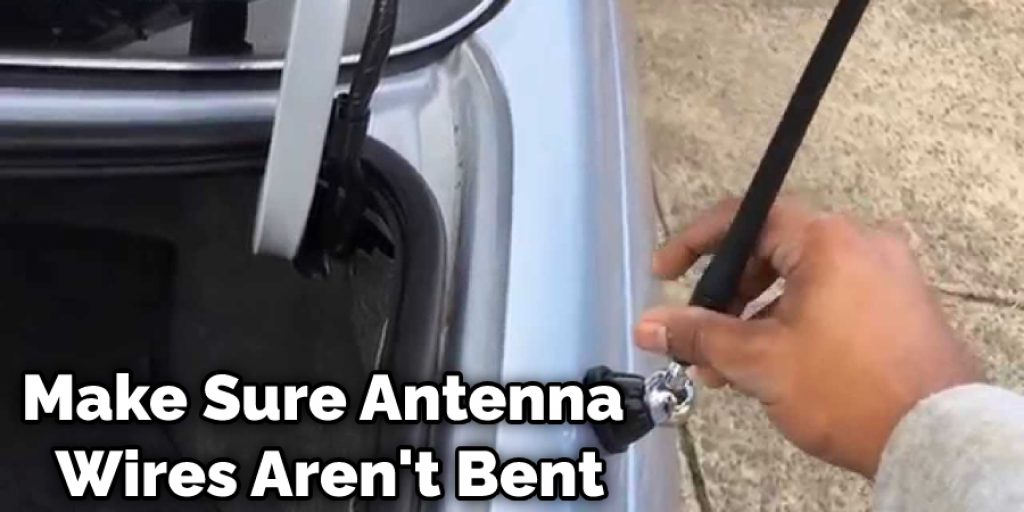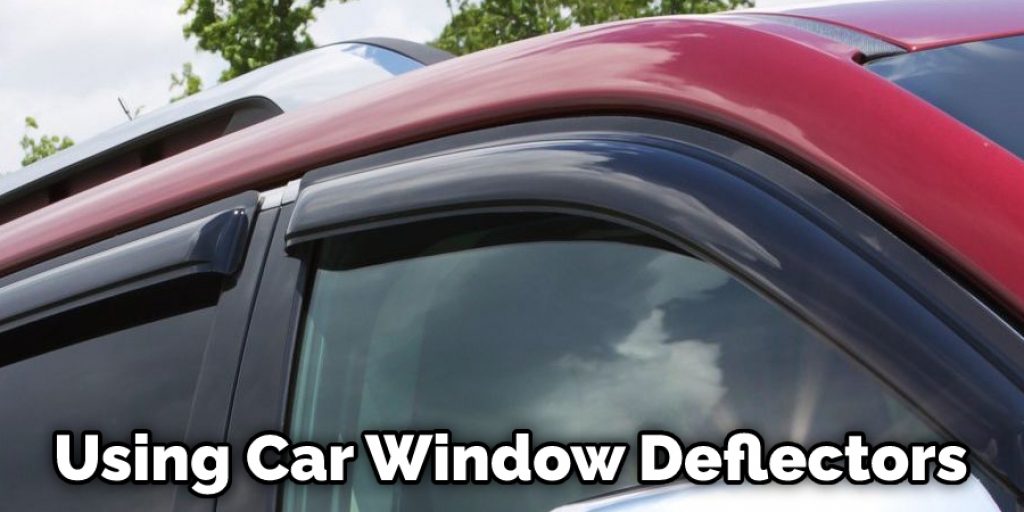In this blog post, we will discuss how to fix wind noise from the car door. There are a few ways to fix wind noise from your car door. One way is to lubricate the strike plate and striker with a product like WD-40. Another way is to adjust the striker to make better contact with the plate.

You can also install weather stripping around the edge of your door panel to help seal it better. Finally, you can use a sound dampening material on the inside of your door panel. These solutions should help reduce or eliminate wind noise from your car door. Read on to know more!
Summary: Wind noise from car doors is an annoying problem, but there are ways to fix it. Weatherstripping or rubber strips can be used as a sealant around the door, and caulk or silicone may be applied around the edge. Sound deadening material may also help, and cork, gasket tape, car covers, shellac, thicker window tint and grilles can all be used to reduce wind noise from car doors.
18 Effective Steps on How to Fix Wind Noise From Car Door
Step 1: Identify the Source of Wind Noise
The first step to fixing wind noise from a car door is to identify the source of the noise. Drive the car at a moderate speed and listen carefully to pinpoint the area where the noise is the loudest. You may also want to ask a friend to drive while you listen from the passenger side or back seat to help you identify the source.
Step 2: Inspect the Door Seals
Examine the door seals for any visible damage or wear, such as cracks, tears, or gaps. These seals are made of rubber and can become worn or damaged over time, allowing wind to enter the car and create noise. Make note of any areas where the seals appear to be compromised.
Step 3: Check the Door Alignment
Inspect the alignment of the car door in relation to the frame of the car. If the door is not aligned properly, it may not close tightly, allowing wind to enter and cause noise. Look for any signs of misalignment, such as gaps between the door and the frame, or uneven spacing around the edges of the door.
Step 4: Clean the Door Seals
Dirt and debris can accumulate on the door seals, reducing their effectiveness and contributing to wind noise. Use a mild soap and water solution to clean the seals, being sure to remove any dirt, dust, or debris that may have collected on them. Wipe the seals dry with a clean cloth.
Step 5: Apply Weatherstripping Lubricant
Apply a weatherstripping lubricant, such as silicone spray or dielectric grease, to the door seals. This will help to maintain the seals’ flexibility and ensure a proper seal when the door is closed. Follow the manufacturer’s instructions for the specific lubricant you are using.
Step 6: Adjust the Door Striker Plate
If the door is misaligned, you may need to adjust the door striker plate to ensure a proper seal. Loosen the screws on the striker plate, and adjust it so that the door closes tightly and securely. Once the door is properly aligned, tighten the screws to secure the striker plate in place.
Step 7: Replace Damaged Door Seals
If the door seals are damaged or worn beyond repair, you may need to replace them. Purchase replacement seals from an auto parts store or your car’s dealership, and follow the manufacturer’s instructions for installation. You may need to remove the door panel to access and replace the seals.
Step 8: Install Additional Weatherstripping
If the existing door seals are not sufficient to prevent wind noise, you can install additional weatherstripping to improve the seal. Purchase adhesive-backed weatherstripping from an auto parts store or online, and apply it to the door frame or the edge of the door, depending on the design of your car.
Step 9: Check for Other Sources of Noise
Wind noise can sometimes be caused by loose or damaged exterior components, such as mirrors, trim, or roof racks. Inspect your car for any loose or damaged parts that may be contributing to the wind noise and repair or replace them as necessary.
Step 10: Test Drive the Car
After making the necessary adjustments or repairs, take the car for a test drive to assess whether the wind noise has been resolved. If the noise persists, repeat the previous steps to identify and address any remaining issues.
Step 11: Consult a Professional Mechanic
If you are unable to resolve the wind noise issue on your own, consult a professional mechanic or auto body specialist. They can help diagnose and repair any issues contributing to the wind noise, ensuring a comfortable and quiet driving experience.
Step 12: Perform Regular Maintenance
Regular maintenance and inspection of your car’s door seals and exterior components can help prevent wind noise issues in the future. Clean and lubricate the door seals periodically, and inspect the seals and other components for signs of wear or damage. Address any issues promptly to maintain a comfortable and quiet driving environment.
Step 13: Insulate the Door Panels
If the wind noise issue persists even after addressing the door seals and other exterior components, you may need to insulate the door panels to further reduce noise. Purchase automotive sound-deadening material, such as Dynamat or similar products, and follow the manufacturer’s instructions for installation. This may involve removing the door panels and applying the sound-deadening material to the interior surface of the door.
Step 14: Replace Worn or Damaged Door Components
In some cases, the wind noise may be caused by worn or damaged door components, such as the window regulator, door lock mechanism, or window channels. Inspect these components for signs of wear or damage, and replace them as necessary to restore the proper function of the door and minimize wind noise.
Step 15: Upgrade Window Glass
If your car has single-pane window glass, upgrading to double-pane or laminated glass can help reduce wind noise. Consult an auto glass specialist or your car’s dealership for information on available options and the installation process.
Step 16: Check for Damage to the Car’s Exterior
Inspect the car’s exterior for any damage, such as dents or scratches, that may be affecting the door’s seal and contributing to wind noise. Repair any damage as necessary to restore the car’s structural integrity and improve the seal between the door and the car’s body.
Step 17: Maintain Proper Tire Pressure
Ensure that your car’s tires are properly inflated, as improper tire pressure can contribute to road noise that may be mistaken for wind noise. Check your car’s owner’s manual or the tire information placard on the driver’s side door jamb for the recommended tire pressure, and adjust accordingly.
Step 18: Use a Wind Deflector
In some cases, installing a wind deflector on your car’s windows can help reduce wind noise. Purchase a wind deflector designed for your specific make and model of car, and follow the manufacturer’s instructions for installation.
By following these steps and being diligent in maintaining and inspecting your car’s door seals, exterior components, and other potential sources of wind noise, you can effectively address and prevent wind noise issues. A quiet and comfortable driving experience is essential for your enjoyment and peace of mind on the road.

Some Tips and Suggestions
Here are some helpful tips on how to fix wind noise from car door.
1. Make sure your windows are rolled up all the way. If they’re not, a build-up of wind pressure might cause a whistling noise as you drive down the road.
2. Trim or cut away some of the material trapping wind at the top of your window; it’s simply creating more resistance, so it would be wise to get rid of it.
3. Make sure that your window is completely sealed; check all around the rubber lining on your doors because sometimes there’s a small gap that traps air and makes noise while you’re driving down the road.
4. If none of these things seem to work, you should try using insulation foam (the kind you can buy at a hardware store) to ensure that the wind makes its way into your car, not around it.
5. Cover any exposed seams with weather stripping and apply some behind the rubber lining on your window because this creates a better seal and makes sure that air doesn’t seep in there, creating noise.
6. Make sure that your door is properly adjusted. If it’s not, you’ll have trouble with your windows rolling up and down and the wind noise problem.
7. Make sure things like antenna wires aren’t bent, so they don’t create rattle noises while you’re driving down the road.

Why It’s Important to Fix Wind Noise From Car Door
Generally, a car door’s wind noise can become a serious problem. While it may not be as annoying as engine noise or tire squeal, this sound distracts the driver and passengers from having conversations in the cabin, even at low speeds. This can cause accidents through lack of attention on what’s happening on the road and irritate other drivers on the road.
Therefore, fixing wind noise from the car door is important so you can have a nice and relaxing ride inside your vehicle without worrying about these noises that may prove to be fatal in some situations. Despite how cheap car materials may sound, a professional should always fix this problem immediately.
How Long Does it Take to Fix Wind Noise
The first issue you have to face is how long it will take before your car door insulation installation ends. The time it takes will depend on the type of car door insulation kit you have purchased and whether or not you have a do-it-yourself attitude.
If so, this project shouldn’t take more than a few hours. Some kits come with just the adhesive, and some even come with the sealant, so you can cut down on your installation time if necessary.
You Can Check It Out To Fix Sloshing Sound in Car
What Causes Wind Noise in Cars
Wind noise may come from a car door. When you close it, the air gets pushed between the rubber gasket and the metal part of the seal that closes around it. When the air pushes against the rubber, it can make strange uncomfortable noises for both yourself and other passengers in your car. If the noise is present when you open your door, check to see if there’s any debris like leaves or pine needles stuck in between the seal.
If there isn’t, pinch the space between the gasket and seal with your fingers to see if it disappears. If so, you’ll need to replace the rubber. If the noise comes when you are driving, check whether there are any loose screws on the door that might be causing this issue. It may also come from wind pressure against your car while moving forward.
You Can Check It Out to: Fix Overcharged Car Ac
Do Wind Deflectors Make Noise
Wind noise is one of the most annoying problems of owning a car. It’s caused by air rushing over the vehicle and finding its way into different areas. You can often hear it on your doors, hood, roof, windows, etc.
The only way to reduce wind noise is to prevent air from entering your vehicle. This can be achieved using car wind deflectors, also known as window deflectors or door deflectors.

You Can Check It Out to: Repair Small Tear in Car Headliner
Frequently Asked Questions
Why Can I Hear Wind in My Car?
You may be experiencing wind noise in your car if the windows are opened at a high speed or when the weather is calm and there’s a significant breeze. The sound of air moving through openings such as window venting, door seals, or even just an open window can create a “whirring” noise that’s commonly heard in cars.
Why Does My Car Sound like a Wind Tunnel?
Your car’s sound is a result of the air pressure in your vehicle changing as you drive. The higher the atmospheric pressure, the less resonant or “barking” your engine will produce. Conversely, when the atmospheric pressure decreases (as occurs during high winds), more resonance is heard because increased airflow causes an increase in compression and thus volume.
Can You Hear a Car Fan?
This is a difficult question to answer without more information. Can you hear a car fan when it’s running? It’s possible, but it’s not likely. The reason why is that the fan is spinning so quickly that the noise it produces is overwhelming. If you want to hear the fan, you’ll need to speed it up and then listen for the sound of the blades.
What Is It When Your Car Sounds like an Airplane?
When your car sounds like an airplane, it’s time for a tune-up! A tune-up is a perfect way to keep your vehicle running smoothly and efficiently. It can prevent mechanical issues from occurring and save you money in the long run.
A major part of a regular tune-up is checking your fluids, including oil, transmission fluid, brake fluid, power steering fluid, and cabin air filter. In addition to these vital liquids, we also check all of the systems in our vehicles – brakes (front & rear), engine (check compression ratio & coolant levels), drive train (axles alignment/tires pressure], suspension components/lines /u joints, etc.), door operation (joints lubrication). All of this helps us diagnose and repair any problems that may be causing decreased performance or inconvenience.,
By scheduling regular maintenance on our cars it will not only prolong their life but also help us preserve valuable savings when something does go wrong down the road.
Conclusion
When you close your car door, the sound of the wind hitting the side of the vehicle can be quite loud. This is due to several factors, including the car’s design and how well it’s insulated. While there’s not much that can be done about the noise caused by wind passing over the car, you can do a few things to reduce the amount of noise coming from your car door.
One way to fix wind noise from your car door is to install weather stripping around the edge of the door. This will help create a tighter seal and keep out more air pressure. You can also buy aftermarket seals or use foam tape to achieve a similar effect.
The tips laid out in this blog post should help you start thinking about how to fix wind noise from car door. Let us know if there are any other questions or articles you’d like to see on our blog in the future by contacting us today!
You Can Check It Out to: Repair Hole in Airbag Suspension
